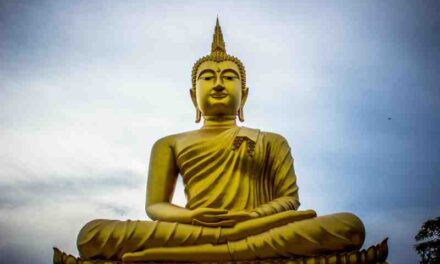Discovering the Essence of Buddhism
Are you searching for a path that leads to inner peace and self-discovery? Look no further than Buddhism. With its profound teachings and timeless wisdom, Buddhism offers a transformative journey that can unlock the door to a more fulfilled and peaceful life.
By following these teachings, Buddhists believe that they can gradually purify their minds from greed, hatred, and delusion and cultivate positive qualities such as generosity, loving kindness, compassion, joy, and equanimity. These qualities help them to overcome suffering and attain inner peace, as well as to benefit others through their actions.
Buddhism is not a dogmatic or rigid religion, but rather a flexible and adaptable one that can suit different people’s needs and preferences. There are many schools and traditions of Buddhism that have developed over time, each with its own emphasis and interpretation of the Buddha’s teachings. Some of the major branches of Buddhism are Theravada, Mahayana, Vajrayana, Zen, Pure Land, Nichiren, Tibetan, and Western.
Buddhism is not only a religion but also a philosophy, a psychology, a science, an art, and a way of life. It offers a rich and diverse heritage of teachings, practices, scriptures, rituals, symbols, art forms, literature, architecture, music, festivals, customs, and ethics that can enrich one’s life and culture. Buddhism also encourages dialogue and cooperation with other religions and secular movements that share its values of peace, justice, harmony, and human dignity.
Buddhism is not an escape from reality but rather an engagement with reality. It invites us to look deeply into ourselves and our world with honesty and courage. It challenges us to transform our minds and hearts through wisdom and compassion. It inspires us to live with joy and gratitude in the present moment. It empowers us to unlock our inner peace and share it with others.
Exploring Buddhist Philosophy
Buddhism is more than just a religion – it is a way of life. It teaches us to cultivate wisdom, compassion, and mindfulness in order to find liberation from suffering and achieve a state of enlightenment.
On our platform, you will find a wealth of articles and resources that delve into the essence of Buddhist philosophy. From the Four Noble Truths and the Eightfold Path to the concept of impermanence and the practice of meditation, we strive to provide a comprehensive guide to navigating the intricacies of Buddhism’s profound concepts.
Guidance for Seekers of Inner Peace
Whether you are a seasoned practitioner or just beginning to explore the path of Buddhism, Buddha Nirvana is here to offer guidance and support. Our blog section is filled with uplifting and informative content that will inspire and motivate you on your journey.
How to Apply the Teachings of Buddhism to Our Daily Lives
Here are some specific ways that we can apply the teachings of Buddhism to our daily lives:
- Be mindful of our thoughts and actions. When we are mindful, we are more aware of the choices that we make and the consequences of our actions. This can help us to make wiser choices and to avoid causing harm to ourselves or others.
- Cultivate compassion and kindness. When we are compassionate, we are able to see the suffering of others and to feel empathy for them. This can motivate us to help others and to create a more just and compassionate world.
- Let go of attachment. Attachment to things, people, and ideas can be the source of much suffering. When we are able to let go of attachment, we become more free and less vulnerable to suffering.
- Live in the present moment. When we are dwelling on the past or worrying about the future, we are not able to fully appreciate the present moment. The present moment is all that we have, so it is important to be present and to savor it.
The Power of Meditation
Meditation is a powerful tool for cultivating inner peace. Meditation involves focusing the attention on a single object or task. This helps to calm the mind and to develop concentration.
There are many different types of meditation. One simple form of meditation is to focus on the breath. Sit comfortably in a quiet place and close your eyes. Bring your attention to your breath and notice the rise and fall of your chest as you breathe in and out. If your mind wanders, gently bring it back to your breath.
Another form of meditation is to focus on a mantra. A mantra is a word or phrase that is repeated silently or aloud during meditation. Mantras can help to focus the mind and to create a sense of inner peace.
One of the most accessible ways to start a mindfulness practice is through meditation. Meditation involves setting aside a few minutes each day to sit quietly, focus on the breath, and observe the thoughts and sensations that arise without attachment. Over time, this practice cultivates a calm and focused mind that extends beyond meditation sessions into daily life.
Mindfulness can also be integrated into daily routines. For example, practicing mindful eating involves savoring each bite of food, paying attention to its texture and taste, and eating without distraction. This simple practice can transform eating into a deeply nourishing and enjoyable experience.
In addition to formal meditation and mindful eating, there are countless other ways to infuse mindfulness into daily life. Walking mindfully, for instance, involves paying attention to the sensations of each step, the feeling of the ground beneath the feet, and the rhythm of breathing. These practices can be done anywhere, anytime, making mindfulness accessible to all.
Through our articles, you will learn practical tools and techniques for cultivating inner peace and happiness. From mindfulness exercises and breathing techniques to self-reflection and gratitude practices, we aim to empower you with the tools you need to navigate life’s challenges with grace and resilience.





